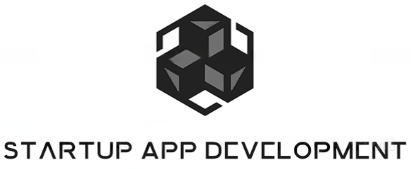In today’s fast-paced digital world, creating an app that meets users’ needs quickly and efficiently is crucial. MVP (Minimum Viable Product) Sprints have emerged as a powerful method to expedite the development process while ensuring valuable features make it to the market. In this blog, we’ll explore how MVP Sprints can significantly accelerate app development and why they’re a game-changer for development teams.
Understanding the MVP Concept
The MVP approach emphasizes creating a product with the minimum set of features necessary to satisfy early adopters. This strategy allows developers to validate product assumptions and gather early feedback without investing substantial time in full-feature development.
In the world of app development, the MVP approach is akin to building a sturdy foundation. By starting with the basics, developers can effectively test their concepts in real-world scenarios. This method not only reduces initial costs but also opens the door for iterative improvements based on user input. Importantly, the MVP journey initiates a clearer path toward understanding user preferences and behaviors, equipping developers with the blueprint they need to iterate and improve upon over time. This strategy aligns with agile principles and prioritizes delivering value swiftly, which is crucial in an ever-evolving market.
The Role of Sprints in Development
Sprints divide the development process into manageable, time-boxed intervals, usually two to four weeks. This allows teams to focus on specific tasks, enhancing productivity and ensuring a steady progress stream toward the final product.
The structured nature of sprints encourages developers to hone in on short-term objectives while keeping the end goal in sight. This strategy fosters a team-wide concentration where immediate tasks are tackled efficiently. Furthermore, the time constraints inherent in sprints stimulate creativity by prompting teams to prioritize and tackle problems swiftly, leading to faster solutions. Not only do sprints minimize procrastination, but they also cultivate a rhythm of regular releases, allowing for continuous user feedback and constant iteration. This rhythm aligns development efforts closely with user expectations and market demands.
One of the key benefits of sprints is that they provide a natural cadence of reflection and adjustment. At the end of each sprint, teams conduct reviews to assess what went well and what can be improved, creating a culture of continuous learning and adaptation. This built-in flexibility ensures that teams can pivot as needed without derailing the overall project timeframes, enhancing the ability to swiftly react to user feedback or changes in the development landscape. Additionally, incorporating sprints into MVP development encourages cross-disciplinary collaboration, key in breaking down silos and enhancing communication across teams.
Benefits of Combining MVP with Sprints
MVP combined with sprints offers several advantages, including faster market entry, reduced development costs, and the ability to pivot based on user feedback. This approach keeps development teams agile and responsive to change.
When MVP is combined with sprint methodologies, it provides a robust framework that not only accelerates time-to-market but also bolsters a feedback-driven approach. This synergy enables teams to take calculated risks by iterating rapidly and responding to market needs dynamically. In commercial terms, it translates into reduced costs by avoiding the development of unnecessary features, thus conserving resources for critical functionalities and enhancing user experience. Additionally, this combination fosters a highly responsive environment where learning and adjusting become part and parcel of the development lifecycle, ultimately driving innovative and well-tailored solutions.
The essence of combining MVP with sprints lies in harnessing the power of continuous improvement. For startups, this methodology is invaluable in building agile products that are well-aligned with user needs and market trends. Teams can capitalize on the iterative nature of sprints to incrementally refine features, thereby ensuring more meaningful user interactions and forging stronger market ties. Furthermore, this alignment accelerates growth, as the feedback cycle drives strategic pivots and nurtures an entrepreneurial mindset focused on meeting and exceeding user expectations. Embracing this dual approach leads to products that not only perform well but resonate deeply with their intended audience.
Steps to Implementing MVP Sprints
Implementing MVP Sprints involves defining clear objectives, assembling a cross-functional team, and setting sprint goals. Regular reviews and feedback sessions help refine the product, ensuring it aligns with user needs.
The first step towards a successful MVP Sprint is establishing concrete goals. Clear objectives drive the development process and inform every decision made during the sprint. Identifying the key problem your app aims to solve sets the stage for selecting the features that will provide the most value. Assembling a diverse team with varied expertise ensures that all aspects of development are covered—from design to engineering, and from marketing to user experience. This variety of skills injects different perspectives into the process, leading to well-rounded solutions and fostering creativity.
Setting sprint goals is crucial for maintaining focus throughout the development cycle. These goals should be challenging yet achievable, ensuring that the team remains motivated without becoming overwhelmed. Regular feedback sessions allow the team to reflect on their progress, making necessary adjustments to keep the project aligned with the overarching objectives. These sessions are pivotal in capturing user insights and pivoting swiftly in response to any new findings or challenges encountered along the way. Whether through daily stand-ups or end-of-sprint retrospectives, fostering open communication helps create a feedback-rich environment that fuels continuous improvement and innovation.
Real-World Examples of Success
Several companies have successfully employed MVP Sprints, leading to innovative and user-friendly apps. By examining these case studies, we can learn how the MVP Sprint approach transforms ideas into successful products.
Consider the case of a rapidly growing startup that leveraged MVP Sprints to climb the ranks in their industry. By prioritizing crucial features, they reduced their initial scope, allowing them to push their app to market within tight deadlines. As user feedback rolled in, they skillfully adapted their sprints, integrating valuable insights to refine their application progressively. This iterative loop enabled them to address user needs promptly, fostering community trust and gaining a competitive edge. This case exemplifies how MVP Sprints can significantly streamline app development, leading to substantial growth and market positioning.
In another instance, a software firm used MVP Sprints to launch a revolutionary productivity tool. Their methodology involved launching a rudimentary version with critical functionalities, promptly gathering user data to assess performance and satisfaction. This data-driven approach allowed them to focus on enhancing user-preferred features while phasing out less popular ones. The iterative process wasn’t just about addressing immediate feedback; it was also about forecasting user trends and staying ahead of the curve. The result was a highly acclaimed app lauded for its relevance and effectiveness, demonstrating the exemplary benefits of strategically combining MVP principles with sprint methodologies to deliver impactful solutions.
These cases underscore the transformative potential of MVP Sprints in navigating the complexities of market demands and user preferences. By enabling rapid testing and iteration cycles, MVP Sprints embed a customer-centric focus deeply into the development process. This accelerates the pace at which technology not only reaches the users but adapts to their evolving demands. MVP Sprints ultimately provide a robust mechanism for building resilient apps—ones that continue to thrive even amid shifting technological landscapes and user behaviors. These real-world successes highlight the substantial gains that businesses can achieve by adopting this modern and agile approach to app development.
Harness the Power of MVP Sprints for Faster App Development
Embracing MVP Sprints can revolutionize the way development teams approach app creation. By focusing on core functionality, encouraging collaboration, and enabling rapid user feedback, MVP Sprints streamline the development process and ensure that your app not only meets but exceeds user expectations. For developers looking to gain a competitive edge, MVP Sprints are a crucial strategy to adopt.


